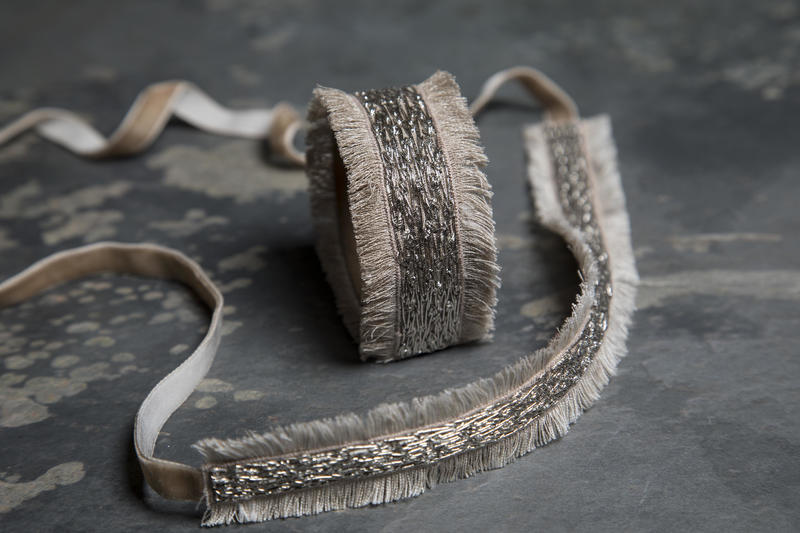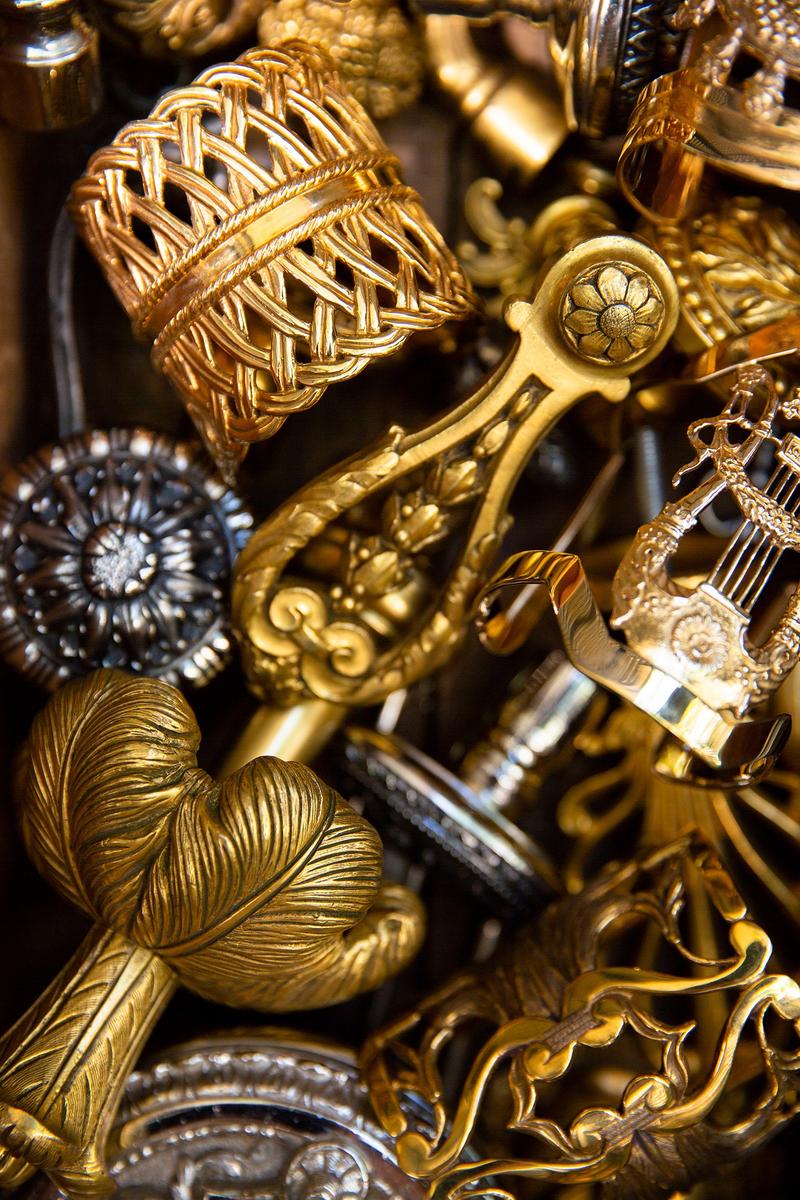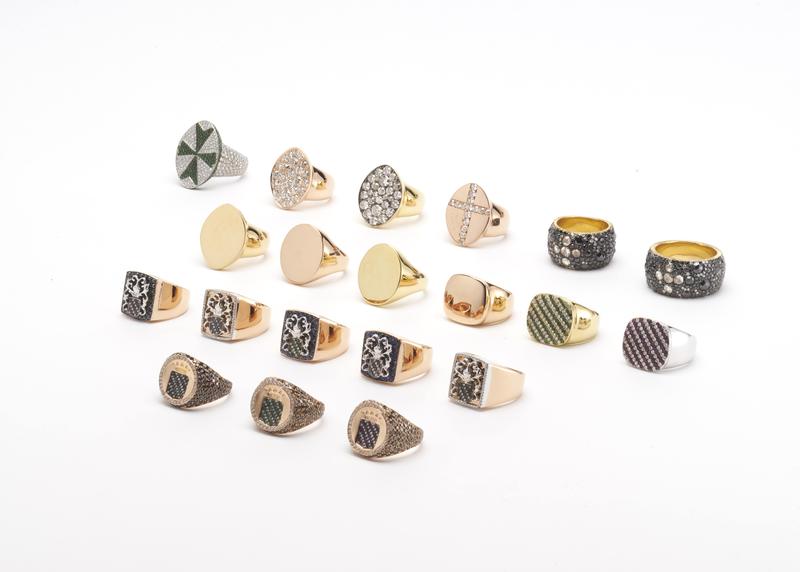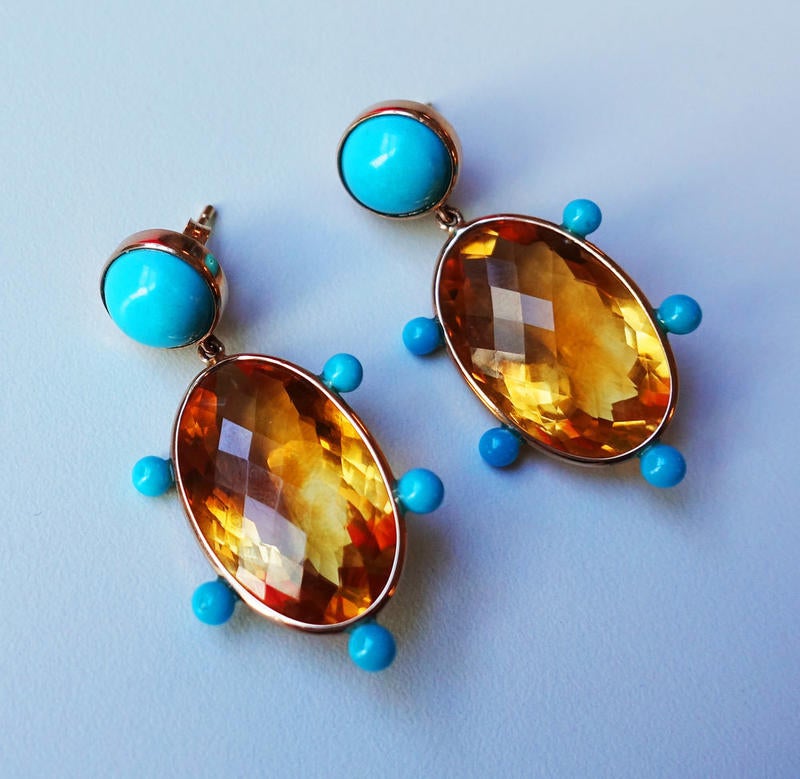If you talk to interior designers long enough, you’ll uncover an open secret: No one only designs interiors. Everyone has sketches for a tile collection in their bag, an idea for a fabric line, or a few hardware mockups back at the office. And, increasingly, we’ve noticed designers slipping the confines of the home entirely and working in a more portable medium: jewelry. Business of Home spoke to a few who have recently taken the plunge—their experiences ran the gamut, but the starting point was usually a simple, “Why not?”

“When you’re a designer, nothing is safe,” says Charlotte Moss. “There’s always some new thing you’re thinking, ‘Hmmm, let’s give that a go.’” Moss would know. The versatile interior designer has created a wide variety of products over her three-decade career, ranging from china and carpets to caftans. This year, she’s giving jewelry a spin, with a line of cuff bracelets in collaboration with legendary hardware manufacturers P.E. Guerin. (The fact that they’d never done it before, she admits, made it an offer that was impossible to resist.)

Moss was new to jewelry, but her choice of partner made the transition easy—she had already worked extensively with the New York–based foundry for her day job, so the groundwork for a collaboration had been laid. Moss spent a few dusty days combing through the company’s archive to pick six suitable designs, which she then adapted into 24-karat gold bracelets. The resulting collection is a clever combination of architectural hardware, history and pure glam—the perfect mix for an interior designer’s first jewelry line (especially one who is already known for rocking a cuff bracelet or two).
Lori Weitzner, a New York–based textile designer, took a similar path in creating her first collection: Start with what you know. Weitzner has spent her career creating wallcoverings, rugs and passementeries. “I feel like I’ve been designing jewelry for the home; I wanted to do it for humans,” she told BOH. Weitzner relied on artisans she has worked with before to create her debut line of fabric-based bracelets and necklaces. The collection squares neatly with her other profession: It would feel very much at home sold in Samuel & Sons.
Sometimes it’s not the sources that are the same, but the methods. Last year New York–based designer Katie Ridder debuted a collection of necklaces, brooches and earrings that shares the same traditional backbone and vibrant colors of her interiors. Though she had never made jewelry before, she found the rhythm of the work to be reassuringly familiar. “You’re coming up with an idea and working with talented craftspeople to execute it,” Ridder told BOH. “There’s a lot of going back to the jeweler a million times to get the details right—almost the way I’d go back to the upholsterer to finesse the embroidery on a table skirt.”
 “I feel like I’ve been designing jewelry for the home; I wanted to do it for humans,” said Weitzner
“I feel like I’ve been designing jewelry for the home; I wanted to do it for humans,” said Weitzner
Designers can rely on the sources and skills they’ve cultivated to create jewelry, but just as importantly, they have a built-in audience. Everyone we spoke to was hoping to sell their jewelry to existing clients. Some already had. Interior designer Martyn Lawrence Bullard recently created a collection of signet rings inspired by his lifelong love of antique jewelry. He displays the line in his L.A. atelier, but he has also had success with a more personal method: “I have sold pieces to my own clients right off my fingers.”

Though others saw similar success selling to clients, many expressed concern over the psychology of pricing. Designers who have spent their careers cultivating a sensitivity to the difference between Louis XIV and Louis XV may struggle when dealing in semi-precious stones. “Jewelry is a tough sell,” says Ridder. “It’s not something you need. Clients may feel comfortable spending a ton on a couch, but not want to spend $3,000 for earrings on a whim.”

The difficulties aren’t purely financial. Though many skills transfer from interior design, jewelry has its own set of unique challenges. “Everything starts with drafting; however, the execution is very different,” explains Bullard, noting that he’s able to rely on CAD renderings and 3-D drawings for furniture design, but not for jewelry: “I hand-draw the pieces, then that image goes to be carved in wax for approval.” Weitzner says she initially grappled with a more fundamental issue when creating a bracelet design: “At first, I forgot everyone has differently sized wrists!”
Still, most designers relish a fresh challenge, the chance to stretch their creative muscles and try something new. “There’s a lot more freedom,” Weitzner told BOH. “I can do a limited edition. I don’t have to stress about perfect color consistency between two runs the way I would with fabric.” Bullard appreciated the opportunity to work from a different mindset. “For me, an interior is guided by the architecture, the clients’ passions, personality and sense of place. With jewelry, the design is more about a feeling at that moment.”
 “When you’re a designer, nothing is safe,” says Charlotte Moss. “There’s always some new thing you’re thinking, ‘Hmmm, let’s give that a go.’”
“When you’re a designer, nothing is safe,” says Charlotte Moss. “There’s always some new thing you’re thinking, ‘Hmmm, let’s give that a go.’”
Designers who have the time, resources and chutzpah to create jewelry will find plenty of opportunity going forward. However, don’t expect a mass professional exodus—all of the designers we spoke with were excited about creating more jewelry, but none of them had plans to quit their day jobs. “I love doing it, but I had to slow down a little, because I got so busy with projects for clients,” says Ridder, echoing a common roadblock.
“I see it the way I see all my products,” Moss said. “First, I have to make this line a success. Then I’ll have the right to do another.”




























